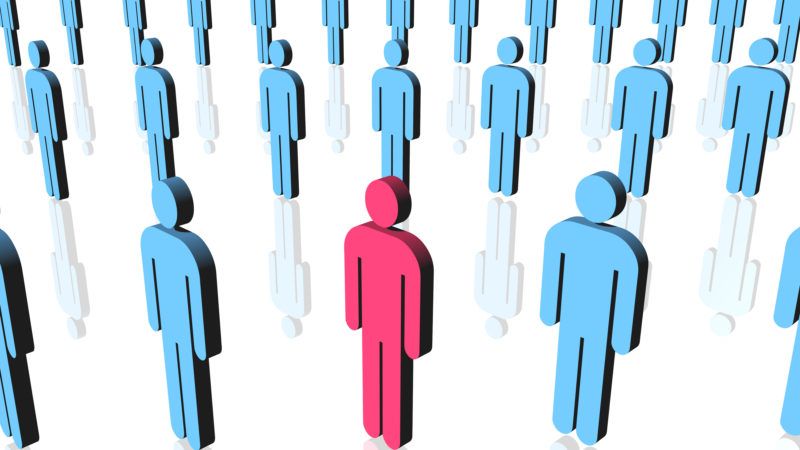Is the COVID-19 Herd Immunity Threshold as Low as 15 Percent?
Social connectivity, prior immunity, and behavior changes may all contribute.

Since the first case of community transmission in the U.S. of the COVID-19 coronavirus was reported seven months ago, more than 7 million Americans, that is, around 2.2 percent of our population, have been diagnosed with the disease according to the Centers for Disease Control and Prevention (CDC). However, researchers estimate that undetected COVID-19 cases are likely to be 10 times greater than diagnosed cases. The machine learning epidemic model run by Youyang Gu and his colleagues estimate that around 16 percent of Americans have already been infected with the COVID-19 coronavirus.
That could be good news if a brief preprint study published yesterday by a team of Scottish researchers that calculates a COVID-19 herd immunity threshold of 15 percent pans out. The Scottish researchers achieve their result by modifying the epidemiological model in a June study in Nature that found that non-pharmaceutical interventions, specifically lockdowns, had averted millions of COVID-19 deaths in Europe.
That Nature study estimated the initial reproduction number (Rt) for the virus to 3.8, that is, each infected person was likely to transmit the virus to 3.8 other people. The classical formula for calculating a herd immunity threshold is 1 minus 1/Rt, which, in this case, would suggest a threshold of nearly 75 percent of the population that would have to be infected or vaccinated. The article also assumed that everyone was equally likely to become infected (homogeneity) and that about 1.1 people out of every 100 infected would die (infection fatality rate or IFR) of the disease.
In their analysis, the Scottish researchers relax the assumption of homogeneity to allow for individual variation in connectivity and susceptibility and apply a more recent lower IFR estimate of 0.3 per 100 infected people. When they compare their modified model's results with actual data on deaths from 11 European countries they find that "a value of 0.3% for the IFR give 15% for the average herd immunity threshold." They further note that "models that allow for heterogeneity favor build-up of herd immunity rather than non-pharmaceutical interventions as the main factor underlying the early slowing and reversal of the COVID-19 epidemic in Europe. This is consistent with observations that epidemic curves in many countries reached a peak less than two months after the first few severe cases appeared."
However, the researchers add that based on the data they are using "it is not possible to distinguish the relative contributions of heterogeneity of connectivity, heterogeneity of susceptibility, or any other process that could have generated a smooth downward trajectory in Rt over about one month in each of the 11 European countries studied." In other words, the falling number of diagnosed COVID-19 cases in Europe during the summer resulted from the combined effects of the more socially connected being afflicted first and then becoming immune or dead; prior immunity to the coronavirus in a significant proportion of the population; and voluntary changes taken before lockdowns, such as limiting mobility, social distancing, masking, and increased hand-washing.
Interestingly, preliminary calculations by Gu and his colleagues make similar calculations to estimate what they call the "effective herd immunity threshold" for the U.S. They estimate that for the U.S. the coronavirus' Rt was at 2.3 back in March and April, which yields a classical herd immunity threshold of around 60 percent of the population either having been infected or vaccinated. Back in August Gu's team calculated that the effective herd immunity threshold stood now between 10 and 35 percent depending upon which state was being considered. More recently Gu and his team estimate that the Rt in the U.S. is now about 1.1 which crudely suggests a national effective herd immunity threshold of 10 percent.
While Gu and his colleagues reference the research on how population heterogeneity may affect herd immunity thresholds, they note that their effective herd immunity threshold calculations incorporate "the social distancing standards and policy interventions at a given time. This is the minimum percentage of the population immune at a certain time such that transmission slows down under those conditions. If immunity is lost [e.g., antibodies fading away] or restrictions are relaxed, then the eHIT [effective herd immunity threshold] may increase." They add, "A removal of current restrictions and interventions, as well as a loss of immunity over time, may cause this threshold to return to its original levels of 50-80%."
The Scottish researchers' analysis has not yet been peer-reviewed, but here's hoping that their herd immunity calculations prove out.



Show Comments (261)